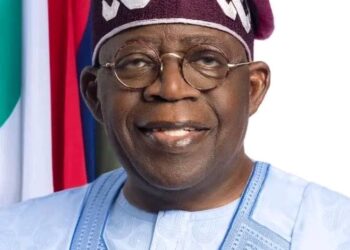During the recent celebration of Nigeria’s centenary, the National Library of Nigeria, mounted several photo exhibitions to focus on Nigeria’s historical moments. AUGUSTINE OKEZIE attended the exhibition and captured its implications
It was no longer news that in 1914, Nigeria was famously merged in two protectorates, defying geography and language, to become a united in indivisible country.
One hundred years on, Nigeria, after shedding British colonial powers in 1960, has transcended mere protectorates, and has thus become a melting pot of more than 500 ethnicities, religions, affiliations.
It is those historical moments spanning eras before, during and after colonial rule that the National Library of Nigeria captured in a centenary exhibition, showcasing books and actors involved in making the country’s history.
According to the Director /Chief Executive Officer of The National Library of Nigeria, Mallam Habib Abba Jato, “The photo exhibition no doubt, is to avail Nigerians, historical sources of immeasurable value as she celebrates the centenary of her existence as a nation,”
He further described it as an opportunity to be informed of “where we were before the amalgamation, where we are now as a nation and to plan on where we desire and aspire to be in the future.”
Capitals have since changed from Lokoja’s growing urban sprawl to Lagos’ megacity to Abuja’s concrete jungle, yet Lugard remains a fixture. Regrettably, the memories of a former founder of Nigeria, George Tubman Goldie, who doesn’t routinely feature in history books after having destroyed all records detailing his life and forbidding the writing of his biography, was conspicuously lost out in the exhibition.
Black and white colours
The walls of photos from the pre-colonial times captured a long line of workers loading groundnut from famous groundnut pyramids onto waiting Lorries. The next photo is a painting of two Portuguese in sailor gear bowing before the monarch of Bini kingdom.
The Black-and-white photos, from the colonial times presumably shot on daguerreotypes detail ground-shifting moments in Nigeria’s political growth, include: the governor-general inspecting a guard of honour, sitting of the federal legislative council, opening of parliament presided over by the British monarch.
Public manners, pageants, state banquets, handshakes, garden parties, royal attendances and appearances of Britain’s princes and princesses, were all captured in black and white.
As Independence approaches, the pictures quickly evolve. The famous photo of the prime minister, one waving hand in the air, in the back of convertible captures the seminal moment.
In the next photo, his car is led by a gang of motorcycles leaving Tafawa Balewa Square after receiving the Instalment of Independence. They were followed by processions on Lagos’ Marina Street and around Idumota.
One post-Independence shot showed the departure of the retiring governor-general on 15 November 1960,a month and 15 days after Independence, on a boat chugging through Marina in Lagos.
Might and lost potential
Less than 10 years after, as Nigeria stood on the brink of a breakup in civil war, the photos didn’t capture malnutrition and despair but the marvel of warfare technology that ironically demonstrated innovations that could one day save the country millions of naira in ammunitions purchase.
Tanks, warships and armoured personnel carriers emblazoned with the Biafran emblem come alive in photos from late ’60s to early ’70s.
In all, the historical expo “provided us an immeasurable sense of who we are and how we got to be one of the most powerful countries in the world and the African continent as well as a regional power in the West African region,” said Jato.
“History also lets us know what we did wrong, so that we do not repeat our mistakes.”
Post-colonisation and after Independence, spots in history have been taken over by names of leaders that have made headlines, sold newspaper stories and filled history books in the last 50 years—alongside their first ladies.
Several photos down, the expo goes beyond dead presidents and late heads of state to royal fathers, and notable women in the country.
Digital disruption
The pictures on display were collected from electronic copies made over time, said Solape Oshile, head of the library’s information and communications technology unit.
“They form our conservation and preservation. Everything about Nigeria is what we have tried to capture electronically.”
Disruptive internet technology could also help the library keep inventory and lessen the pressure of flipping through gigantic bibliographies to search for the books it carries.
‘’The entire centenary collection will remain on its website for longer. But it is also using its database of users to research areas of interest which will guide the matched articles it sends to readers. It will also guide subjects of interests that it will send to targeted potential researchers’’, he assured
In the 50 years of its existence, the library has stocked nearly 11 million books, serial, journals, monographs, government documents, and indeed, everything published in Nigeria, about Nigeria, or by a Nigerian.
Most are through legal deposits [think newspapers] or through paid acquisition and donations.
Historical documents and the country’s famous “bluebooks” are due for a digital makeover—a conversion of the old browned paper scanned as digital pages, said Gloria Matthew, director of National Library’s virtual library services department.
The plan, Matthew said, is to “digitize and bring them back with flip technology, such that maybe in another year as we celebrate 101 [years] of Nigeria, we will be able to flip through them and preserve the bluebook and preserve our mandate of the nation’s memory.”



